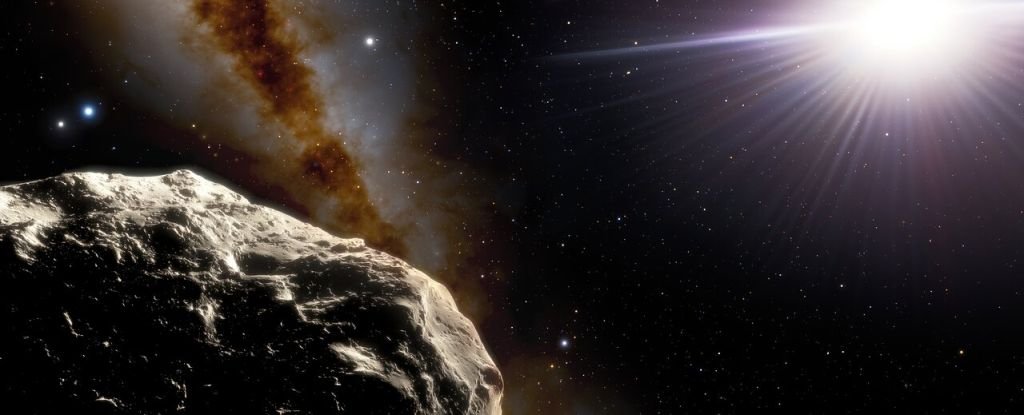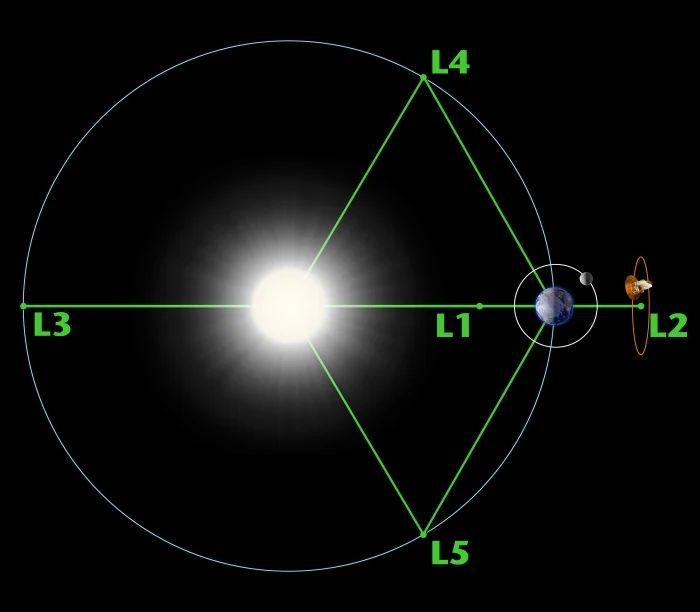
Posted on 02/01/2022 10:55:32 AM PST by Red Badger

Earth has officially been joined in its orbit around the Sun by a new trojan asteroid.
Named 2020 XL5, this chunk of rock is only the second object of its type ever to have been conclusively identified. Its discovery suggests that perhaps Earth trojans may be more common than we knew, and offers new insights into these mysterious rocks.
Like the first trojan, astronomers predict that 2020 XL5 will hang around for at least 4,000 years before zipping off to parts elsewhere.
"The discovery of a second Earth trojan asteroid may enhance our knowledge of the dynamics of this elusive population," scientists write in a new paper. "By comparing the orbital nature of the two Earth trojans known so far, we can better understand the mechanisms that allow for their transient stability."
Trojan asteroids are asteroids (also known as minor planets) that share the orbital path of larger planetary bodies in the Solar System. They can be found in two gravitationally stable regions leading and trailing the planet, known as Lagrange points.
These are pockets where the gravitational pulls of the planet and the Sun balance perfectly with the centripetal force of any small body in that region to basically hold it in place.
Each two-body system has five Lagrange points, as seen in the diagram below. There are five between Earth and the Moon; and another five between Earth and the Sun. The Lagrange points where trojans can be found are leading L4 and trailing L5 regions.

Lagrange points. (NASA/WMAP Science Team)
Trojans are well known in the Solar System. Jupiter, naturally, has the most, with well over 11,000 documented, but we've found them hanging out with other planets too. Neptune has 32, Mars has nine, and Uranus has one.
Earth's other trojan, named 2010 TK7, is a chunk of rock around 300 meters (984 feet) across, hanging about the Earth-leading L4 Lagrangian in an oscillating tadpole-shaped orbit known as libration. It's not a permanent fixture, though; eventually, in around 15,000 years, gravitational interactions will kick it out of its current orbit.
2020 XL5 is very similar. It, too, librates around L4, and will only hang around temporarily, with new observations revealing its orbit in much finer detail. But it's a lot bigger than its companion.
New observations using the Southern Astrophysical Research Telescope (SOAR) have allowed astronomers to discern that its diameter is 1,180 meters (3,871 feet). We also now know what type of asteroid it is.
"SOAR's data allowed us to make a first photometric analysis of the object, revealing that 2020 XL5 is likely a C-type asteroid, with a size larger than one kilometer," says astronomer Toni Santana-Ros of the University of Alicante in Spain.
C-type (carbonaceous) asteroids are darker in hue because they're rich in carbon. They're also the most numerous asteroids in the Solar System; more than 75 percent of all Solar System asteroids could be carbonaceous. They're among the oldest objects in the Solar System, with a composition similar to that of the Sun itself.
This makes C-type asteroids an attractive target for studying the early Solar System and the formation of the planets, and Earth trojans potentially even more so. We currently have several space observatories "parked" in Earth-Sun Lagrange points; having a C-type asteroid hanging about nearby within reach would be an excellent opportunity.
2020 XL5 might not be it, however. Its orbit takes it nearly as far out as Mars, and crosses Venus' orbital path. But it could show us how to search for other Earth trojans.
Any object orbiting the Lagrangians would be moving around a lot, leaving a very large patch of sky to scour looking for relatively small objects; having two Earth trojans to study will give astronomers a bigger toolkit for calculating those orbits.
In turn, that could help us find a population of potentially hundreds of Earth trojans, lurking out there in the dark.
"If we are able to discover more Earth trojans, and if some of them can have orbits with lower inclinations, they might become cheaper to reach than our Moon," says astronomer Cesar Briceño of the National Science Foundation's NOIRLab.
"So they might become ideal bases for an advanced exploration of the Solar System, or they could even be a source of resources."
The team's research has been published in Nature Communications.
is this something Hubble could trained onto?
Possibly, as long as it’s not too ‘close’ to the Sun in the field of view.........................
Flood, Fire, and Famine
in the History of Civilization
by Richard Firestone,
Allen West, and
Simon Warwick-Smith
Thanks Red Badger.
[snip] Like the first trojan, astronomers predict that 2020 XL5 will hang around for at least 4,000 years before zipping off to parts elsewhere... Each two-body system has five Lagrange points, as seen in the diagram below. There are five between Earth and the Moon; and another five between Earth and the Sun. The Lagrange points where trojans can be found are leading L4 and trailing L5 regions... Earth's other trojan, named 2010 TK7, is a chunk of rock around 300 meters (984 feet) across, hanging about the Earth-leading L4 Lagrangian in an oscillating tadpole-shaped orbit known as libration. It's not a permanent fixture, though; eventually, in around 15,000 years, gravitational interactions will kick it out of its current orbit. 2020 XL5 is very similar. It, too, librates around L4... its diameter is 1,180 meters (3,871 feet)... Its orbit takes it nearly as far out as Mars, and crosses Venus' orbital path. But it could show us how to search for other Earth trojans. [/snip]
By coincidence, Venus’ sister Michelle Starr wrote this story.
“If we are able to discover more Earth trojans, and if some of them can have orbits with lower inclinations, they might become cheaper to reach than our Moon,” says astronomer Cesar Briceño of the National Science Foundation’s NOIRLab.
“So they might become ideal bases for an advanced exploration of the Solar System, or they could even be a source of resources.”
***Maybe we can finally get NASA to focus on what it should be doing instead of becoming a muzzie outreach organization. There could be $Trillions at stake.
LaGrange Point sounds like Business selling Chickens in Central Texas.
thank you
Those are perfectly balanced chickens.
Disclaimer: Opinions posted on Free Republic are those of the individual posters and do not necessarily represent the opinion of Free Republic or its management. All materials posted herein are protected by copyright law and the exemption for fair use of copyrighted works.